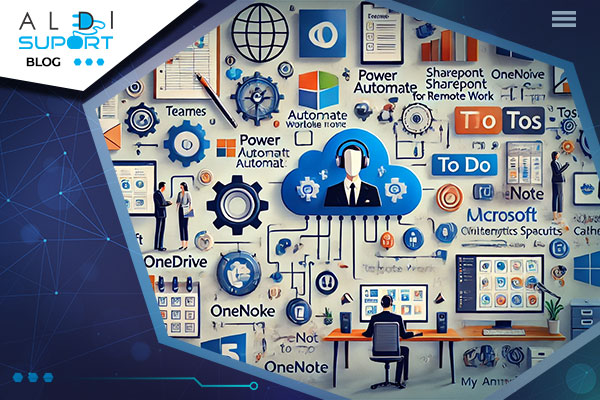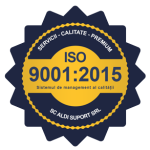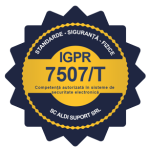Remote work has become an integral part of the modern work environment. As organizations continue to adapt to this new norm, tools like Microsoft 365 have become essential in ensuring productivity and collaboration. In this article, we will explore the top 10 Microsoft 365 tips that can help streamline your remote work experience, making it more efficient and enjoyable. From enhancing communication to automating tasks, these tips will empower you to get the most out of Microsoft 365.
Optimize Communication with Microsoft Teams
Efficient Team Communication One of the most crucial aspects of remote work is maintaining clear and effective communication. Microsoft Teams is a powerful tool within the Microsoft 365 suite that facilitates seamless communication among team members. Whether you need to attend virtual meetings, send instant messages, or collaborate on documents, Microsoft Teams is the ideal solution.
Tips for Using Microsoft Teams:
- Creating Thematic Channels: Organize your team into thematic channels to keep discussions relevant and structured. For example, you can create channels for specific projects, departments, or topics of interest.
- Using Pinned Messages: Pin important messages at the top of the channel for quick and easy access to essential information.
- Scheduling Recognized Meetings: Use the integrated calendar in Teams to schedule meetings and send invitations to the team. This helps in coordinating time and avoiding overlaps.
Automate Tasks with Microsoft Power Automate
Automating Repetitive Tasks Automating repetitive tasks can save valuable time and reduce the risk of human error. Microsoft Power Automate (formerly Microsoft Flow) is an excellent tool for automating workflows, allowing you to create automated processes between your favorite apps and services.
Tips for Using Microsoft Power Automate:
- Automating Emails: Create workflows that automatically send responses to emails or sort emails into specific folders based on predefined criteria.
- File Synchronization: Automate file synchronization between different platforms, such as OneDrive and SharePoint, to ensure all data is updated and available wherever you need it.
- Automatic Notifications: Set up automatic notifications for important events, such as deadlines or project updates, to stay informed at all times.
Efficient Collaboration with OneDrive and SharePoint
Storing and Sharing Documents Microsoft OneDrive and SharePoint are essential tools for storing and sharing documents within teams. They allow quick and secure access to files, facilitating real-time collaboration and ensuring updated versions of documents.
Tips for Using OneDrive and SharePoint:
- Organizing Files: Structure your files into logical folders and subfolders for easy navigation and quick access to necessary documents.
- Secure Sharing: Use secure sharing options to control who can access and edit your files. You can set specific permissions for individual users or groups.
- Real-Time Collaboration: Take advantage of real-time collaboration features, which allow multiple users to edit a document simultaneously. This way, you can see changes in real time and work together more efficiently.
Efficient Project Management with Microsoft Planner
Planning and Monitoring Projects Microsoft Planner is a project management tool that helps you plan, monitor, and collaborate on your projects efficiently. With an intuitive interface and advanced features, Planner allows you to organize tasks and track project progress.
Tips for Using Microsoft Planner:
- Creating Plans: Create detailed plans for each project, with specific tasks and clear deadlines. This helps you better manage your time and resources.
- Assigning Tasks: Assign tasks to team members and set deadlines to ensure everyone knows what to do and when.
- Monitoring Progress: Use the integrated charts and reports to monitor project progress and identify any bottlenecks or delays.
Boost Productivity with Microsoft To Do
Managing Daily Tasks Microsoft To Do is a simple and efficient tool for managing daily tasks. With its help, you can create task lists, set reminders, and prioritize activities, ensuring you stay organized and productive throughout the day.
Tips for Using Microsoft To Do:
- Creating Task Lists: Create task lists for each day, week, or project. This helps you structure your activities and focus on what is important.
- Setting Reminders: Set reminders for important tasks so you don’t forget deadlines or scheduled meetings.
- Prioritizing Activities: Prioritize tasks based on importance and urgency. Start with critical activities and leave less urgent ones for later.
Increase Productivity with Microsoft OneNote
Organizing Notes Microsoft OneNote is an excellent tool for organizing notes, ideas, and important information. Whether you attend virtual meetings, study, or plan a project, OneNote helps you keep all information in one place.
Tips for Using Microsoft OneNote:
- Creating Notebooks: Organize your notes into thematic notebooks for clear structure and quick access to desired information.
- Using Tags: Use tags to mark important notes, to-do tasks, and main ideas. This way, you can quickly find essential information.
- Sharing Notes: Share notes with team members for real-time collaboration and feedback.
Protect Data with Microsoft 365 Security
Data Security Protecting sensitive data is essential, especially in the context of remote work. Microsoft 365 offers a wide range of security tools that help you protect information and prevent unauthorized access.
Tips for Using Microsoft 365 Security:
- Two-Factor Authentication (2FA): Enable two-factor authentication for an additional layer of security for your account.
- Phishing Protection: Use security filters to detect and block phishing attacks. Train your team to recognize phishing signs and avoid clicking on suspicious links.
- Data Encryption: Ensure all sensitive data is encrypted both in transit and at rest to prevent unauthorized access.
Easy Collaboration with Microsoft Whiteboard
Visual Collaboration Microsoft Whiteboard is a visual collaboration tool that allows you to create, share, and edit ideas and concepts in a virtual space. It is ideal for brainstorming, project planning, and visualizing ideas.
Tips for Using Microsoft Whiteboard:
- Creating Sketches: Use the drawing features to create quick sketches and visualize ideas.
- Real-Time Collaboration: Invite team members to collaborate in real-time, adding and editing content on the board.
- Integration with Other Tools: Integrate Whiteboard with other Microsoft 365 tools, such as Teams and OneNote, for even more efficient collaboration.
Managing Calendar with Outlook
Time Planning Microsoft Outlook is not just an email tool, but also an excellent calendar manager. It helps you organize your time, schedule meetings, and manage daily tasks.
Tips for Using Outlook:
- Scheduling Meetings: Use the calendar feature to schedule meetings and send invitations to the team. This helps in avoiding overlaps and coordinating time efficiently.
- Setting Reminders: Set reminders for meetings and important deadlines so you don’t miss any events.
- Organizing Emails: Use folders and labels to organize emails and quickly find necessary information.
Monitoring Performance with Microsoft MyAnalytics
Improving Personal Productivity Microsoft MyAnalytics is a tool that provides insights into how you spend your time at work. It helps you identify work habits and find ways to improve personal productivity.
Tips for Using Microsoft MyAnalytics:
- Analyzing Time Spent in Meetings: Monitor how much time you spend in meetings and identify ways to reduce their duration to have more time for other tasks.
- Managing Focus Time: Set dedicated focus time, without interruptions, to work on important tasks.
- Work-Life Balance: Use data from MyAnalytics to find a balance between work and personal life, ensuring you don’t overload yourself with tasks.
Conclusion
Effective use of Microsoft 365 tools can completely transform the remote work experience, making it more productive, organized, and secure. From optimizing communication and automating tasks to protecting data and improving personal productivity, these tips provide practical solutions for common remote work challenges. Start implementing these strategies and see how your work becomes more efficient and enjoyable.
How can I better organize team communication using Microsoft Teams?
Microsoft Teams allows you to create thematic channels, pin important messages, and schedule meetings to ensure clear and structured communication.
How can I automate repetitive tasks with Microsoft Power Automate?
You can create workflows that automatically send email responses, synchronize files between platforms, and send automatic notifications for important events.
What are the best practices for storing and sharing documents with OneDrive and SharePoint?
Organize files into logical folders, use secure sharing options, and take advantage of real-time collaboration features.
Cum mă pot asigura că datele mele sunt protejate în Microsoft 365?
Activează autentificarea cu doi factori, utilizează filtre de securitate împotriva phishingului și criptează datele sensibile.
How can I ensure my data is protected in Microsoft 365?
Enable two-factor authentication, use security filters against phishing, and encrypt sensitive data.
How can I use Microsoft Whiteboard for visual collaboration?
Create quick sketches, collaborate in real-time with the team, and integrate Whiteboard with other Microsoft 365 tools for more efficient collaboration.
How can I improve my personal productivity with Microsoft MyAnalytics?
Monitor time spent in meetings, manage focus time, and use data to find a balance between work and personal life.





